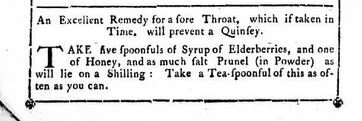Elderberry: Forgotten Fruit Makes a Comeback
In our second chat with Kentucky farmer and author John Moody, we talk about elderberry.
Moody is the author of The Elderberry Book, in which he explores not only the cultivation and use of elderberry, but also it’s rich history.
Long History of Elderberry Use
Moody told his publisher, “I want to write a book about elderberry because it’s been almost 1,400 years since there was a book written about only elderberry.”
With his knowledge of Latin, Greek, and Hebrew, Moody has been able to explore its use and lore in ancient texts.
There is a lot of story and lore involving elderberry in more recent times too. He points out that they can be found in Harry Potter, Monty Python, Shakespeare—and are even the subject of a Hans Christian Andersen fairy tale.
Elderberry on his Farm
Moody says that on his farm, each of his children is required to have a homestead business. His daughter Abby chose elderberry syrup—and the business has done extremely well.
Elderberry is in demand: He says that there is currently not enough elderberry to supply demand in North America.
Using Elderberry
Elderberry recipe from a calendar made in Nova Scotia, Canada in 1793
The elderberry fruit has many uses, including juice, tea, jelly, pie, and marinades.
The flowers can also be consumed, and are frequently used in teas, salads, and fritters.
But Moody says there is a rich history of use of medicinal use of other parts of the elderberry plant.
Top Tips for Growing Elderberry
Moody’s top three tips for growing elderberry:
Grow a number of varieties to determine which will be the most productive in your conditions
The least expensive way to get plants is by rooting hardwood cuttings
Elderberry is a moisture-loving plant, so give it a wet location, for example, near a downspout



